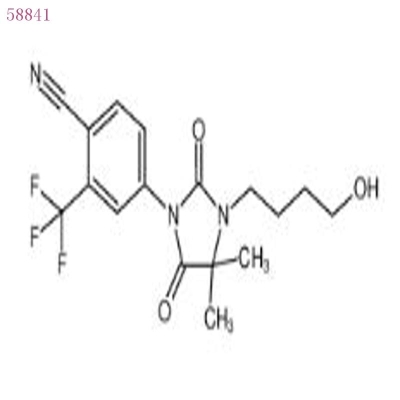-
Categories
-
Pharmaceutical Intermediates
-
Active Pharmaceutical Ingredients
-
Food Additives
- Industrial Coatings
- Agrochemicals
- Dyes and Pigments
- Surfactant
- Flavors and Fragrances
- Chemical Reagents
- Catalyst and Auxiliary
- Natural Products
- Inorganic Chemistry
-
Organic Chemistry
-
Biochemical Engineering
- Analytical Chemistry
- Cosmetic Ingredient
-
Pharmaceutical Intermediates
Promotion
ECHEMI Mall
Wholesale
Weekly Price
Exhibition
News
-
Trade Service
Title: CRISPR directed evolution of the spliceosome for resistance to splicing
Journal:
Haroon Butt, Ayman Eid, Afaque A. Momin, Jeremie Bazin, Martin Crespi, Stefan T. Arold and Magdy M. Mahfouz
Published: 2019/04/30
Digital ID: 10.1186/s13059 -019-1680-9
Original link:
WeChat Link:
's 2018 Nobel Prize in Chemistry was awarded to Frances H. Arnold for her pioneering work in the study of the directional evolution of enzymes. The award also recognizes the technology technology between directional evolution and evolution. Targeted evolution is common in pattern organisms such as bacteria and yeast, and attempts have been made to target evolution in human cells, viruses, or DNA vector systems. At the same time, directional evolution also has great research value in the field of plant research. The first is that the super-multi-energy differentiation of plants makes this strategy much more feasible, and second, the abundance of plant species provides humans with a large number of food sources, making targeted evolution potentially economically valuable.
a
-based study from the King Abdullah University, published recently in the journal
.rice OsSF3B1 is a protected gene of the endocyte species and plays a very important role in the RNA shearing of organisms. In human diseases, SF3B1 is a target for tumor therapy, and in crops, RNA shear inhibitors are an effective herbicide. The Mahfouz team pioneered the design of 15,000 sgRNAs for the OsSF3B1 gene, using CRISPR-Cas9 technology to produce a corresponding amount of rice healing tissue bank. After the cultivation screening of the RNA shear inhibitor GEX1A, 21 strains with GEX1A resistance were produced. Further studies have found that resistance is mainly due to the loss of 1-10 amino acids in the OsSF3B1 gene. Mechanism studies have shown that mutants are likely to interact differently with RNA inhibitors with the loss of these amino acids. Because the functional domains in which these amino acids are located may be adversary of special significance, the research team also designed the healing tissue library for THED repeat domain, and the directional evolution efficiency was greatly improved.
this study has different implications for crop breeding and provides a novel and feasible solution for agricultural output and food safety. The direction of crop breeding is usually to improve or change its herbicide resistance, photochemical, biological and non-biological pressure resistance, and CRISPR-assisted directional evolutionary methods provide a new platform for these breeding directions. Although it now appears that directional evolution is often used to screen proteins, the expression-regulated shun-acting elements can also be used as the next target for directional evolution. In addition, it will be interesting to expand the technology into the field of directional evolution of individual animals.
to further improve evolutionary efficiency, there are a number of strategies that can be used to improve screening scales: select different PAM structures, different Cas9 proteins, or use CRISPR systems based on Cas12a and Cas12b. The future of directional evolution in the organs of the uerynary organism is full of possibilities, and with the help of gene editing systems, the future will be even broader.
summary:
Increasing genetic diversity via directed evolution holds great promise to accelerate trait development and crop improvement. We developed a CRISPR/Cas-based directed evolution platform in plants to evolve the rice (Oryza sativa) SF3B1 spliceosomal protein for resistance to splicing inhibitors. SF3B1 mutant variants, termed SF3B1-GEX1A-Resistant (SGR), confer variable levels of resistance to splicing inhibitors. Studies of the structural basis of the splicing inhibitor binding to SGRs corroborate the resistance phenotype. This directed evolution platform can be used to interrogate and evolve the molecular functions of key biomolecules and to engineer crop traits for improved performance and adaptation under climate change conditions.
the full text of the paper visit:Journal Introduction:() Publices outstanding research in all areas of biology and biomedicine studied from a genomic and post-genomic perspective.
(Source: Science.com)







